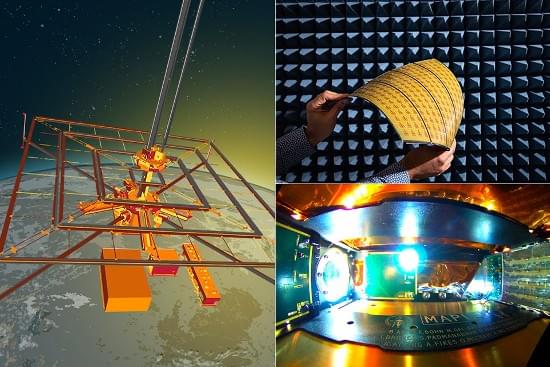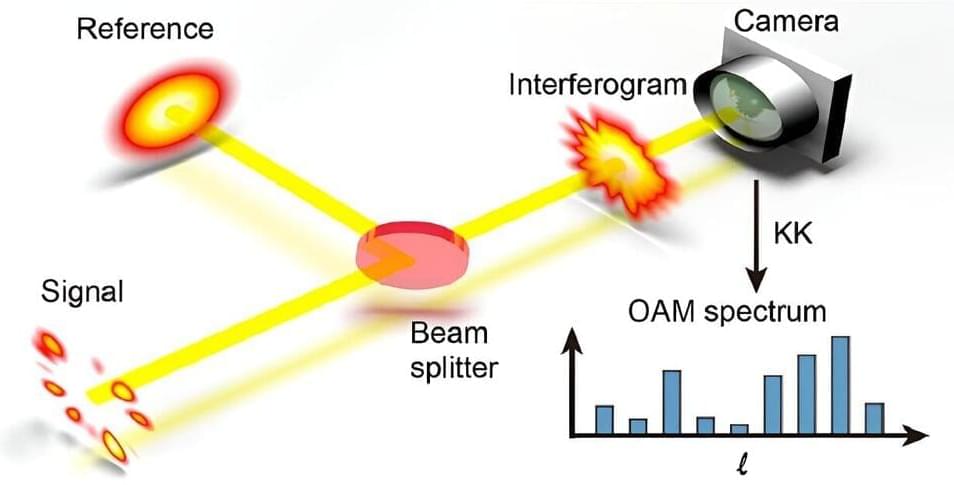A satellite demonstrator showed that energy collected from solar panels in space can be beamed to Earth using diffuse microwaves.
Age is a risk factor for hematologic malignancies. Attributes of the aging hematopoietic system include increased myelopoiesis, impaired adaptive immunity, and a functional decline of the hematopoietic stem cells (HSCs) that maintain hematopoiesis. Changes in the composition of diverse HSC subsets have been suggested to be responsible for age-related alterations, however, the underlying regulatory mechanisms are incompletely understood in the context of HSC heterogeneity. In this study, we investigated how distinct HSC subsets, separated by CD49b, functionally and molecularly change their behavior with age. We demonstrate that blood lineage differentiation progressively shifts to a higher myeloid cellular output in both lymphoid-biased and myeloid-biased HSC subsets during aging. In parallel, we show that HSCs selectively undergo age-dependent gene expression and gene regulatory molecular changes in a progressive manner, which is initiated already in the pre-adult stage. Overall, our studies suggest that aging intrinsically alters both cellular and molecular properties of HSCs.
The authors have declared no competing interest.
That’s how Andrew Feldman, CEO of Silicon Valley AI computer maker Cerebras, begins his introduction to his company’s latest achievement: An AI supercomputer capable of 2 billion billion operations per second (2 exaflops). The system, called Condor Galaxy 1, is on track to double in size within 12 weeks. In early 2024, it will be joined by two more systems of double that size. The Silicon Valley company plans to keep adding Condor Galaxy installations next year until it is running a network of nine supercomputers capable of 36 exaflops in total.
If large-language models and other generative AI are eating the world, Cerebras’s plan is to help them digest it. And the Sunnyvale, Calif., company is not alone. Other makers of AI-focused computers are building massive systems around either their own specialized processors or Nvidia’s latest GPU, the H100. While it’s difficult to judge the size and capabilities of most of these systems, Feldman claims Condor Galaxy 1 is already among the largest.
Condor Galaxy 1—assembled and started up in just 10 days—is made up of 32 Cerebras CS-2 computers and is set to expand to 64. The next two systems, to be built in Austin, Texas, and Ashville, N.C., will also house 64 CS-2s each.
The AI Singularity Future
Posted in economics, robotics/AI, singularity, space
AI singularity refers to the future point where artificial intelligence becomes so advanced that it surpasses human intelligence and undergoes rapid, unpredictable self-improvement, leading to an exponential increase in capabilities. At this stage, AI could potentially reshape society, science, and civilization in profound and transformative ways, and its behavior might become difficult for humans to comprehend or control.
The AI alignment problem refers to the challenge of ensuring that artificial intelligence systems are designed and programmed to act in accordance with human values, goals, and intentions. It involves developing AI systems that align with human interests, do not produce harmful outcomes, and operate transparently and predictably, so they can be trusted and reliably controlled. Addressing the AI alignment problem is crucial to avoid potential risks and negative consequences associated with AI development and deployment.
The AI Singularity Future is an aspiring Decentralized Autonomous Organization(DAO) on Discord (Link) working on the AI alignment and the human alignment problem. We aim to solve the AI alignment problem by guiding the evolution of the AI towards the utopian future of Resource Based Economy. This organisation is being run by the volunteers and the Regional Coordinators of The-Venus-Project Support Community.
A group of international researchers led by the Center for Astrophysics | Harvard and Smithsonian (CfA) achieved the once-unimaginable four years ago: using a groundbreaking telescope to capture an image of a black hole.
Last month some of those researchers, engineers, and physicists convened at Harvard to consider and begin drawing up plans for the next step: a closer study of the photon rings that encircle black holes in glowing orange. The mission has been dubbed the Event Horizon Explorer (EHE), and the group hopes it will offer additional insight into black holes, which sit at the center of galaxies.
The $300 million project examining the nature of space and time builds on the success of the Event Horizon Telescope (EHT) project of 2019, when researchers took the first-ever picture of a black hole, a focal point so tiny “the biggest ones on the sky are only about the same size as an atom held at arm’s length,” said Michael Johnson, an astrophysicist at the CfA.
Structured light waves with spiral phase fronts carry orbital angular momentum (OAM), attributed to the rotational motion of photons. Recently, scientists have been using light waves with OAM, and these special “helical” light beams have become very important in various advanced technologies like communication, imaging, and quantum information processing. In these technologies, it’s crucial to know the exact structure of these special light beams. However, this has proven to be quite tricky.
Interferometry—superimposing a light field with a known reference field to extract information from the interference—can retrieve OAM spectrum information using a camera. As the camera only records the intensity of the interference, the measurement technique encounters additional crosstalk known as “signal-signal beat interference” (SSBI), which complicates the retrieval process. It’s like hearing multiple overlapping sounds, making it difficult to distinguish the original notes.
In a recent breakthrough reported in Advanced Photonics, researchers from Sun Yat-sen University and École Polytechnique Fédérale de Lausanne (EPFL) used a powerful mathematical tool called the Kramers-Kronig (KK) relation, which helps with understanding and solving the problem. This tool enabled them to untangle the complex helical light pattern from the camera’s intensity-only measurements for single-shot retrieval in simple on-axis interferometry. Exploring the duality between the time-frequency and azimuth-OAM domains, they apply the KK approach to investigate various OAM fields, including Talbot self-imaged petals and fractional OAM modes.
Quantum emission is pivotal to realizing photonic quantum technologies. Solid-state single photon emitters (SPEs), such as hexagonal boron nitride (hBN) defects, operate at room temperature. They are highly desirable due to their robustness and brightness.
The conventional way to collect photons from SPEs relies on a high numerical aperture (NA) objective lens or micro-structured antennas. While photon collection efficiency can be high, these tools cannot manipulate quantum emissions. Multiple bulky optical elements, such as polarizers and phase plates, are required to achieve any desired structuring of the emitted quantum light source.
In a new paper published in eLight, an international team of scientists led by Drs Chi Li and Haoran Ren from Monash University have developed a new multifunctional metalens for structuring quantum emissions from SPEs.
While the device is still in the patent stage, it has the potential to completely change the VR/AR experience.
Korro Bio plans a reverse merger with Frequency Therapeutics to fund clinical studies of its lead candidate, designed to treat alpha-1 antitrypsin deficiency (AATD) in the liver.
The transfer of a neurotransmitter from one type of skin cell to another (melanocytes to keratinocytes) altered electrical activity and promoted melanoma initiation in preclinical models, according to results published in Cancer Discovery, a journal of the American Association for Cancer Research.
Melanoma is a deadly form of skin cancer that develops in melanin-containing skin cells known as melanocytes. An intrinsic feature of melanocytes is their ability to secrete melanin-containing vesicles to surrounding skin cells called keratinocytes to give skin its color.
While approximately half of all melanomas harbor mutations in the BRAF gene, these mutations are present in many benign skin lesions as well.








